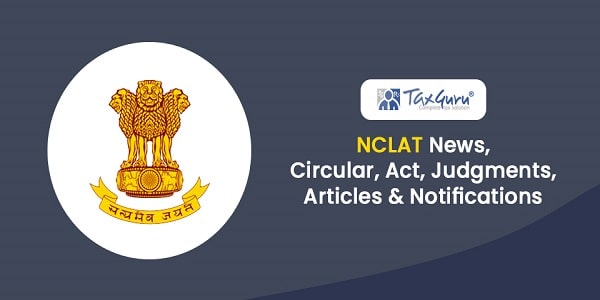CA Prankur Gupta
Objective and applicability date of IFRS 13.
The objective of IFRS 13 Fair Value Measurement is to provide a single source of guidance to fair value measurement by incorporating many principles that already exist in other IFRSs and best practices from the IASB’s 2008 Expert Advisory Panel report.
As IFRS 13 mandates how to determine fair value and required contents in the disclosures.
IFRS 13 enhances disclosures about fair value measurement to provide the users of the financial statements with sufficient information for them to assess the inputs and the valuation techniques that is being used for all fair value measurements
IFRS 13 is applicable from 1st January, 2013.
Basic Principles of IFRS 13.
IFRS 13 defines fair value as the price that would be received to sell an asset or paid to transfer a liability in an orderly transaction between market participants at the measurement date (i.e. an exit price). Fair value emphasizes that fair value is a market-based measurement, not an entity-specific measurement. The definition therefore assumes a hypothetical and orderly exchange transaction (i.e. it is not an actual sale or a forced transaction or distress sale).
The asset or liability measured at fair value may be a stand-alone asset or liability (e.g. a financial instrument or a non-financial item such as an investment property), a group of assets or a group of liabilities, or a group of assets and liabilities (e.g. a cash-generating unit).
** Fair value measurement assumes that the transaction to sell the asset or transfer the liability takes place either in the principal market for the asset or liability; or in the absence of a principal market, in the most advantageous market for the asset or liability.
♣ What is principal Market?
The principal market is defined as ‘the market with the greatest volume and level of activity for the asset or liability’. The principal market should be identified on the basis of the volume or level of activity for the asset or liability rather than the volume or level of activity of the reporting entity’s transactions in a particular market.
WHILE DETERMINING FAIR MARKET MEASUREMENT TRANSACTION COST SHALL NOT BE CONSIDERED AS IT IS NOT RELATED TO THE ASSET.
If there is a principal market for the asset or liability, the fair value measurement shall represent the price in that market, even if the price in a different market is potentially more advantageous at the measurement date.
♣ What is most advantageous market?
The most advantageous market is defined as ‘the market that maximizes the amount that would be received to sell the asset or minimizes the amount that would be paid to transfer the liability, after taking into account transaction costs and transport costs both’.
WHILE DETERMINING FAIR MARKET MEASUREMENT IN MOST ADVANTAGEOS MARKETS IDENTIFY FROM WHICH OF THE MARKET THE MAXIMUM BENEFIT THAT WILL FLOW TO THE ENTITY (i.e., by considering both transaction and transportation cost) and then determine the Value = Price – Transportation cost .
♣ Who are Market Participants?
A fair value measurement is a market-based measurement, not an entity specific measurement. Market participants are defined as buyers and sellers in the principal (or most advantageous) market for the asset or liability that have the following characteristics: Independent (not related), Knowledgeable and able and willing (i.e. they are motivated but not forced) to enter into the transaction.
What is the Scope of IFRS 13?
The measurement and disclosure requirements of IFRS 13 do not apply to the following:
- Share-based payment transactions within the scope of IFRS 2 Share-based Payment
- Leasing transactions within the scope of IAS 17 Leases; and
- Measurements that have some similarities to fair value but are not fair value (e.g. net realizable value in IAS 2 Inventories or value in use in IAS 36 Impairment of Assets).
How IFRS 13 does applies on Non-Financial Assets (E.g., Immovable Property etc)?
A fair value measurement of a non-financial asset, takes into account a market participant’s ability to generate economic benefits by using the asset in its ‘highest and best use’ or by selling it to another market participant that would use the asset in its highest and best use.
Highest and best use is determined from the perspective of market participants, even if the entity intends a different use. However, an entity’s current use of a non-financial asset is presumed to be its highest and best use UNLESS market or other factors suggest that a different use by market participants would maximize the value of the asset.
What are Disclosure principles in IFRS 13?
IFRS 13 requires an entity to disclose information that helps users of its financial statements assess both of the following:
- For assets and liabilities that are measured at fair value on a recurring or non-recurring basis in the statement of financial position after initial recognition, the valuation techniques and inputs used to develop those measurements.
- For fair value measurements using significant unobservable inputs, the effect of the measurements on profit or loss or other comprehensive income for the period.
Conclusion
IFRS 13 is the International Financial Reporting Standard that addresses fair value measurement of asset and liabilities. Inconsistencies in the requirements for measuring fair value and for disclosing information about fair value measurements have contributed to diversity in practice and have reduced the comparability of information reported in financial statements. IFRS 13 should improve comparability by providing one set of measurement and disclosure requirements.
**Next Article on Introduction to IFRS 13: Fair Value Measurement (Valuation of Liabilities).
Author can be contacted at prankur.gupta@live.com




























Sir great
Very wonderful& helpful Article for new learners. You must start practical. Classes for students because there exist a fobia in the students mind that IFRS is typical. To learn
again thanks for such a get article